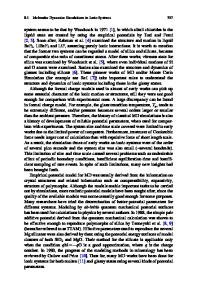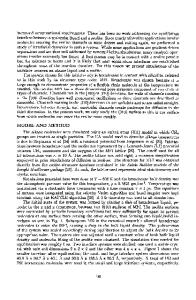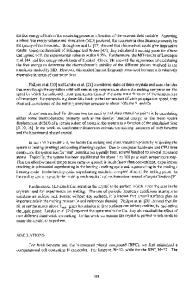Molecular Dynamics Simulations of the Full-Length Prion Protein
- PDF / 814,512 Bytes
- 7 Pages / 612 x 792 pts (letter) Page_size
- 52 Downloads / 336 Views
Molecular Dynamics Simulations of the Full-Length Prion Protein A. A. Mamchur1* , I. S. Panina2** , I. A. Yaroshevich1*** , S. S. Kudryavtseva3**** , and T. B. Stanishneva-Konovalova3***** (Submitted by Vl. V. Voevodin) 1
Department of Biophysics, Faculty of Biology, Moscow State University, Moscow, 119991 Russia 2 Shemyakin-Ovchinnikov Institute of Bioorganic Chemistry, Russian Academy of Sciences, Moscow, 117997 Russia 3 Department of Bioengineering, Faculty of Biology, Moscow State University, Moscow, 119991 Russia Received April 4, 2020; revised April 16, 2020; accepted April 24, 2020
Abstract—Many serious medical conditions are caused by the accumulation of amyloid aggregates in tissues and organs. One of the most well-known amyloidogenic proteins is the prion protein (PrP), which may undergo conformational change between the normal cellular isoform PrPC and the aggregation-prone isoform PrPSc. Elucidation of this conformational transition is necessary for understanding the onset and propagation of prion diseases. However, the flexibility of PrP hinders its research by the experimental methods of protein structure determination. Here, we implement de novo protein modelling and molecular dynamics simulations to predict the interdomain interactions of the full-length PrPC. Our theoretical findings can serve as the basis for mutational analysis and for further studies of the amyloidogenic behavior of the prion protein. DOI: 10.1134/S1995080220080119 Keywords and phrases: molecular dynamics, all-atom simulations, prion protein.
1. INTRODUCTION Many socially significant diseases, including Parkinson’s and Alzheimer’s, are associated with the accumulation of protein aggregates in tissues and organs. The aggregation is caused by a disruption of the native structure of a protein and the assembly of fibrils from its monomeric forms. Proteins capable of such conformational changes are called amyloidogenic and, to date, about 50 such proteins have been identified [1, 2]. Although they differ in amino acid sequences and functions within the cell, amyloid fibrils have similar structures, in which the β-strands of individual monomers are arranged perpendicular to the long axis of the fibril. It is believed that common mechanisms for the emergence and propagation of amyloid aggregates exist, and they are actively studied by methods of structural and computational biology. One of the most well-known amyloidogenic proteins is the prion protein. Prions are protein infectious agents, which cause neurodegenerative diseases called transmissible spongiform encephalopathies (TSE). TSE include scrapie, “mad cow disease,” fatal familial insomnia, kuru, Creutzfeldt–Jakob disease and others. Initially, they were believed to be caused by viruses. However, subsequent studies revealed the pathogenic role of an isoform of one of the cellular proteins [3–5]. *
E-mail: [email protected] E-mail: [email protected] *** E-mail: [email protected] **** E-mail: [email protected] ***** E-mail: [email protected] **
1502
MOLECULAR
Data Loading...











